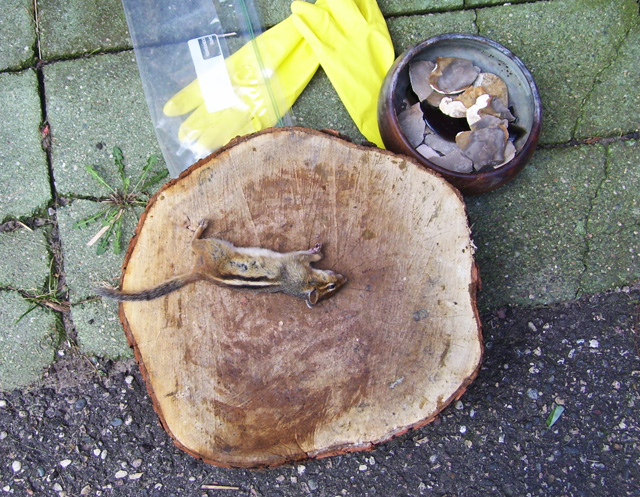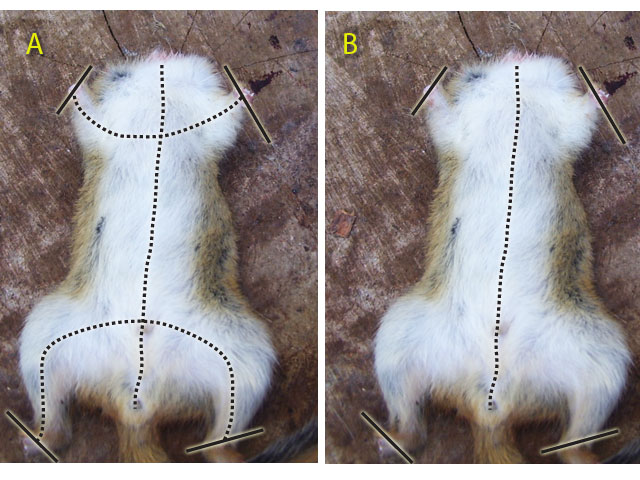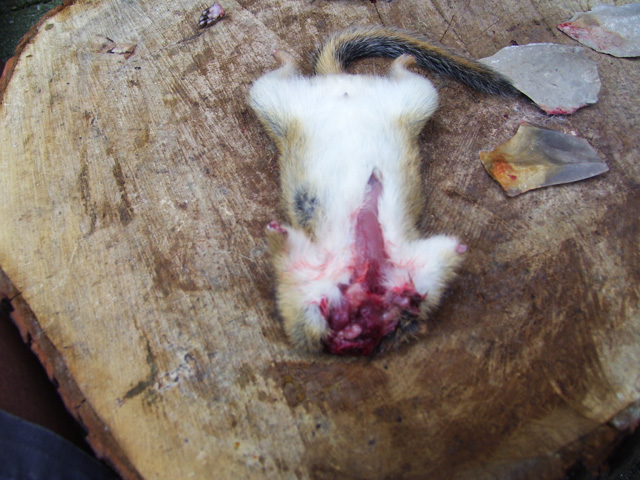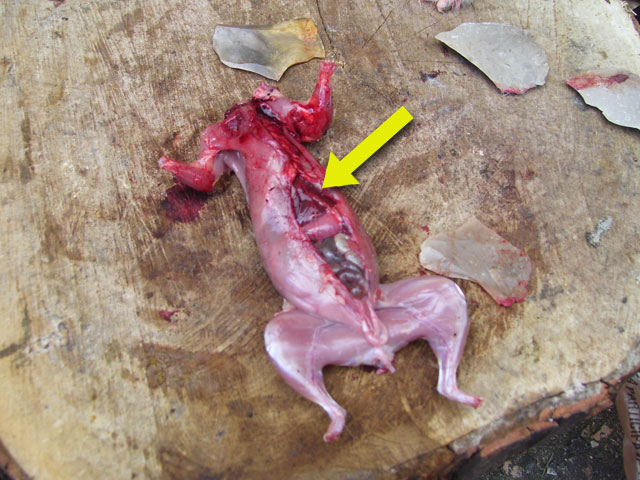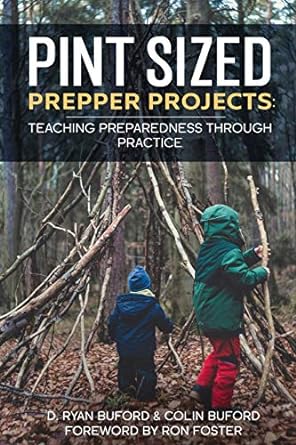How to: Field Dressing Small-Game
Share
WARNING: Graphic gore in this tutorial...If you are squeamish or this offends you, it is okay not to view.
Here I will explain how to de-hide and field dress small game by way
of chipmunk. This was an accidental harvest that I am taking
responsibility for and intend on using the meat in a stew, and
brain-tanning this animal's beautiful coat.
Some major precautions must be taken when processing wild small-game,
such as rabbits, and rodents.
Beware of HANTAVIRUS.
Infection by
hantavirus causes flu-like symptoms followed by acute respiratory
distress. Click here for more info >>
And beware of TULAREMIA.
Signs and symptoms of Tularemia are a skin
ulcer that forms at the site of infection — usually an insect or
animal bite, Swollen and painful lymph glands, fever, chills,
headache, exhaustion. Click
here for more info >>
Wild rodents are also notorius for carrying feas and ticks which can
also carry the above mentioned and other diseases. EXTREME CAUTION MUST BE TAKEN WHEN HANDLING WILD
GAME. THIS TUTORIAL IS INTENDED FOR EDUCATIONAL PURPOSES. I DO NOT
ADVISE YOU TRY THIS AT HOME WITH OUT PROFESSIONAL GUIDANCE.
Instructions
1). Here I have rubber gloves, stone flakes, processing surface,
freezer bag for storage.
2). Remove the head, and feet...
3). Determine the cutting line you will use. Here I used option B.
It was much more simpler because of using stone flakes. It is
important to process as soon after harvest as possible. The colder
the carcass the harder it will be to remove the hide. This is true
for small or large game.
4). Begin to split the hide down the middle. Be very careful to only
slit the hide...do not cut into the gut. Cutting into the intestines
can contaminate the meat.
5). After slitting down to the anus, start from the top of the
carcass begin to pull the hid back like taking off a jacket
6). Keep pulling firmly towards the tail. You can cut the tail from
here. Cutting through the hide and the tail bone or leave the tail
on. Here I only cut the tail bone to leave the tail intact for the
hide.
7). Now begin to cut through the chest cavity and through the the
stomach muscles. BE VERY CAREFUL NOT TO CUT THROUGH THE INTESTINES!
8). Be sure to check the liver for spots. The arrow is pointing to
the liver. This animal had a clean liver with no spots. Spotted liver
is no good. White spots on the liver or spleen are the sign of
tularemia. You really don't have to worry too much about well-cooked
wild rodent meat, especially rabbits, as far as contracting disease,
this is why you should wear rubber gloves while you clean the rabbits
and be aware that rodents can carry ticks that can crawl off them,
onto you, carrying all kinds of not very pleasant things in side of
them.
The cooked meat is not generally a problem, but I would discard any
wild rodent meat with white spots on internal organs because you know
they've got something you don't want.
Click here for more info on Tularemia
9). once you have slit the chest and stomach cavity, slit through the
pelvic girdle to the anus. Then find the esophagus, heart and lungs.
Gently but firmly grasp and pull all three out and downward toward
the anus. All of the innards should come out at one time. Discard
innards. I reused a plastic shopping bag and discarded them there.
In the bush it would be safe to bury the discarded parts well away
from your camp site to avoid large predators from attempting to get
at these parts. Or some parts could be reused for fishing or baiting
traps.
Large game provides tools with organs such as the stomach to make
containers or as a food source. Erroring on caution, avoid eating or
using the intestines of any game.
10). Here I extracted the brains of the animal to use in tanning its
hide. The saying goes, "Every animal has enough brains to tan its own
hide"...I wrapped the brain up in the hide and placed in storage bag
and placed in freezer for later use.
11). Here is the final processed chipmunk with body and hide.
I washed the carcass out with running water and stored for later use.
NOTE:After processing, I wash all surfaces and tools with bleach water to disinfect bacteria.
top↟
